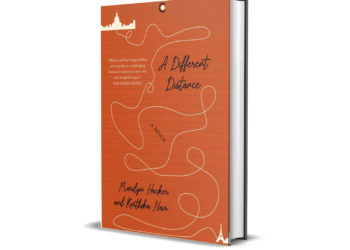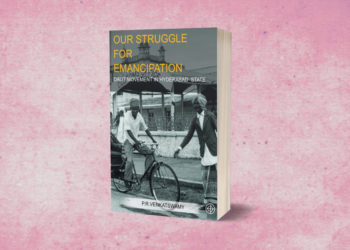When I first heard Mahmood Mamdani, writer of Good Muslim Bad Muslim, Talk of Truth and Reconciliation and the South African Experiment, and the way in which it could be a model for other communities in conflict, I wondered how it could be applicable here in India. Then again in a talk at the Press Club in Mumbai, in 2009, he elaborated on how it was the second-best option for the South Africans to get on with their lives not in acrimony but in a spirit of togetherness. This did not mean, however, that everything was forgotten. There was an attempt to identify and acknowledge the issues that drove the violence, and then look for answers in South Africa (interview in The Hindu, 17 January 2009). Often the best alternatives may not work they seem to have realized.
The way out of a violent conflict cannot be more violence. This is amply clear from what is happening around the world, be it in Kashmir, in Palestine, in Afghanistan or in Iraq. In India too with its long history of communal riots, well before the Partition, while there are efforts to understand the violence, reconciliation has been a rather painful process. While there have been many attempts to bridge gaps between violence-affected communities, there has been no real political process to bring them to any sort of middle ground. There is very little truth and no reconciliation at one level but at a more personal level, in the minds of people, some reconciliation has taken place, allowing them to move ahead with their lives. Even after the Godhra massacre, families of victims spoke about the need for peace. Families who lost their loved ones in the Godhra train fire did not support the revenge taken in their names (Punwani 2002: 69).
Writing about the Partition, Urvashi Butalia (1998: 365) says, “… for the community of survivors, the remembrance ritual works at many levels. It helps keep the memory alive and at the same time, it helps them to forget. They remember selectively, in order to forget. “Justice remained illusory; after years passed, people ceased to expect it. In the interviews, some of them referred to the demolition of the Babri Masjid and what it had really achieved: large-scale displacement, divisions and a hardening of the communal mindset. The temple is not yet built, the mosque lies in ruins and people’s lives are shattered. Apart from the daily struggle for life, the story of many Mumbaikars is one of shattered dreams and restricted choices. The riots touched everyone in some way and the scars remain, hidden in the daily hustle and bustle. Some look for the elusive justice to punish the guilty, some are getting on, some have rebuilt their businesses and some have raised families. The shadows of those days always remain in the background—now misty, now sharp. The mosaic of stories adds to the city’s complexity.
“The 1992–93 riots were the worst the city has ever seen, and left 900 persons dead. For most of Mumbai’s residents, the city changed forever after the riots” (Punwani 2003: 237). And again Punwani writes:
There have always been Hindu ‘parts’ and Muslim ‘parts’ of Bombay. However, after 8 January, 1993, at the peak of the violence, many Hindus for the first time realised what it meant to belong to the majority community; virtually the entire city was theirs to roam as they chose. (Punwani 2003: 238)
Punwani writes about the 1984 riots which seem to have faded out of public memory. This was in many ways a precursor of the future.
Somehow, the impression remained that the 1984 riots had remained confined to a few ‘sensitive spots’ though they had spread all over the city. The most infamous incident in those riots took place in a slum colony called Cheetah Camp, where eight Muslims were shot dead without provocation. (Punwani 2003: 241)
However, the 1984 riots were the turning point for a lot of young Bombayites who had grown up in the 70s believing that their city was truly a microcosm of India, with no place for regional chauvinism. The riots proved that Bombay was a microcosm, but of urban India, where the two principal communities lived in separate ghettos, with little intermingling, their myths and suspicions about each other intact, easy prey to communal propaganda. (Punwani 2003: 242)
After the 1992–93 riots, which created displacement of an unprecedented scale, the polarization worsened. Sushobha Barve (2003: 106) says, “Hindus living in predominantly Muslim areas and Muslims in predominantly Hindu areas became insecure after the turn of events and moved out to other neighborhoods.”
Barve has written in detail about the efforts in Dharavi in bringing about peace, and the work of the mohalla committees (local area committees) in bridging the gap between two riot-scarred communities with some success. She cites the case study of Imamwada in south Mumbai, where dialogue between the Hindu and Muslim communities and the police initiated by the mohalla committee helped solve tricky disputes. “In Imamwada, community policing and partnership with the community and the problem solving approach were successfully utilised”(Barve 2003: 217).
Barve (2003: 219) concludes that “[t]he (mohalla committee) movement has given Mumbai a mechanism that can be activated at a short notice and can assist the police in defusing tensions and maintaining peace with public support in a crisis.” After the riots, the mohalla committees worked well for a while before the police took over and things started disintegrating.
However, spurred on by former Mumbai Police Commissioner, Julio Ribeiro, the movement is still continuing under the Mohalla Committee Movement Trust, which was established in 1994 by Mr Ribeiro and another former Mumbai Police Commissioner, Satish Sahney. Virochan Raote has been working since 2006 as a volunteer in Mumbai in mobilizing mohalla committees that have become defunct in places. Earlier these committees handled community issues, were an interface between police and the public and organized sports events; now they handle more routine issues. People are disinclined to be active in areas where they perceive there is no tension. Virochan thinks that the communal mindset that existed during the riots is no longer there, but people are still communal in their thinking.
While I was researching this book, Farooq Mapkar, a security guard who had gone to pray on 10 January 1993 to Hari Masjid, a mosque in Central Mumbai, was acquitted of rioting and murder charges. A special court for riot cases headed by Additional Sessions Judge R. D. Jadhav pronounced Mapkar innocent on 18 February 2009, nearly 15 years after the original chargesheet was filed. He was actually a witness to the police firing in Hari Masjid, which killed seven persons. He was shot in the back and yet the police filed a case against him and 50 odd others, accus-
ing them of rioting, murder, attempted murder and rioting with deadly weapons. Since then Farooq, both a victim and an accused in the firing, had been running around for justice. He fought a long battle for acquittal, helped by his lawyer Shakil Ahmed.
Works cited:
Barve, Sushobha. 2003. Healing Streams: Bringing Back Hope in the Aftermath of Violence. New Delhi: Penguin Books.
Butalia, Urvashi. 1998. The Other Side of Silence: Voices from the Partition of India. New Delhi: Penguin Books.
Punwani, Jyoti. 2002. ‘The Carnage at Godhra’, in Siddharth Varadarajan (ec.), Gujarat: The Making of a Tragedy, New Delhi: Penguin Books.
Khalidi, Omar. 2006. Muslims in Indian Economy. New Delhi: Three Essays.
This essay has been extracted from —
Riots and After in Mumbai
Chronicles of Truth and Reconciliation
by Meena Menon, Deputy Editor, The Hindu, Mumbai
2011 / 360 pages /Paperback: Rs 450 (9789352806140) / SAGE India





